|
Empire
of Austria-Hungary Österreich-Ungarn The Austro-Hungarian Empire, the Dual Monarchy or the k.u.k.
Monarchy, or Dual State, was a monarchic union between the crowns of the Austrian Empire and the Kingdom of Hungary in Central
Europe. The union was a result of the Ausgleich or Compromise of 1867, under which the Austrian House of Habsburg agreed to
share power with the separate Hungarian government, dividing the territory of the former Austrian Empire between them. The
Dual Monarchy existed for 51 years until 1918, when it was dissolved following military defeat in the First World War. 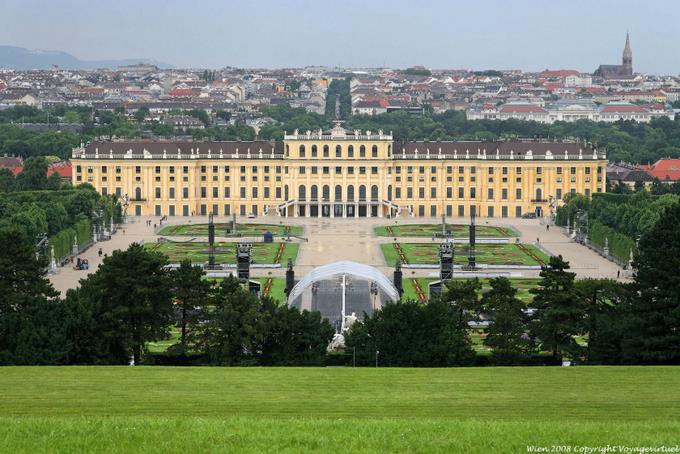 The Habsburg dynasty ruled as Emperor of Austria over the
western and northern half of the country that was the Empire of Austria (Cisleithania or Lands represented in the Reichsrat)
and as King of Hungary over the Kingdom of Hungary (Transleithania or Lands of St Stephen's Crown) which enjoyed self-government
and representation in joint affairs (principally foreign relations and defence). The two capitals of the Monarchy were Vienna
for Austria and Budapest for Hungary. Austria-Hungary was geographically the second largest country in Europe after the Russian
Empire (621 538 km², or 239,977 sq. m in 1905 , and the third most populous (after Russia and the German Empire). History of the Austrian Empire The Empire of Austria (Kaisertum Österreich) from 1804 to 1867 consisted of the Habsburg
lands as a whole, leaving each land its special definition as kingdom (e.g. Bohemia, Hungary), archduchy (Lower and Upper
Austria), duchy (e.g. Carniola) or princely county (e.g. Tyrol). Kaisertum might literally be translated as "emperordom"
on analogy with "kingdom" or "emperor-ship"; the term denotes specifically "the territory ruled by
an emperor". Austria proper (as opposed to the complex of Habsburg lands as a whole) had been an Archduchy since the
15th century, and most of the other territories of the Empire had their own institutions and territorial history, although
there were some attempts at centralization, especially between 1848 and 1859. 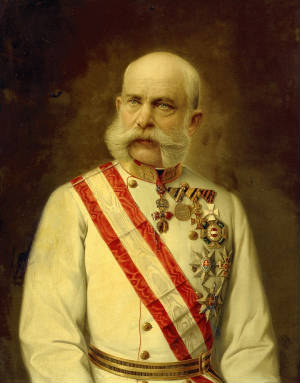 In 1866, Austria lost the war with Prussia and Italy. Francis
Joseph I was urged to solve the internal problems of his realm and was well advised to provide a substantial rise to the Hungarian
nobility, which had stayed in passive resistance to him after the crushed Hungarian revolution of 1848 and 1849: In the Austro-Hungarian
Compromise of 1867 (Ausgleich) Hungary was recognized as a self-governing kingdom outside of the Empire of Austria, in exchange
for willing to keep the common ruler, army, navy and foreign representation (Real union). Transilvania, Croatia and Slavonia
were acknowledged as lands of the Hungarian crown, which were called Transleithania by government officials to distinct them
from Cisleithania, the lands remaining in the Austrian Empire from 1867 onwards. These were officially known only as the "Kingdoms
and Lands Represented in the Imperial Council" (Die im Reichsrat vertretenen Königreiche und Länder). Inofficially
ever since, these territories officially were called Austria from 1915 to 1918 only, despite the fact that all the citizens
held the common Austrian citizenship since 1867. 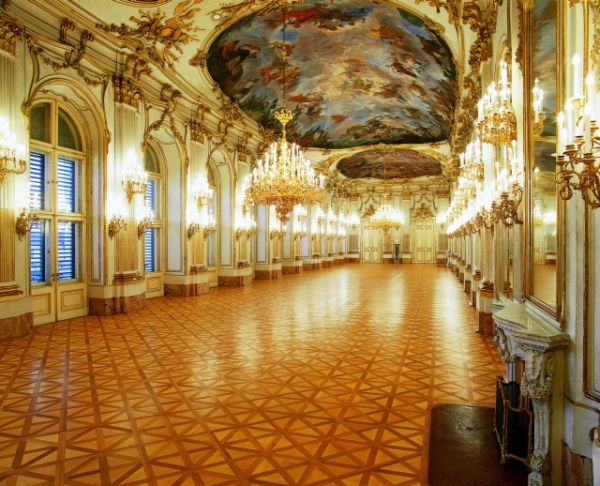 The Empire of Austria broke apart at the end of the First
World War in 1918, when the Austrian lands established their independence (Bohemia and Moravia in newly created Czechoslovakia,
Galicia in newly created Poland) or adhesion to other states (Bukovina to Romania, Carniola and Dalmatia to Yugoslavia) or
were annexed by the victors of war (South Tyrol, Trieste and Istria by Italy). Yet the last Emperor, Charles I, used his imperial
title until the end of his life. The Kingdom of Hungary, having terminated the 1867 compromise by October 31, 1918, broke
apart similarly. The House of Habsburg-Lorraine The House of Habsburg or
Hapsburg (also known as House of Austria) was one the most important royal houses of Europe and is best known for being an
origin of all of the formally elected Holy Roman Emperors between 1438 and 1740, as well as rulers of the Austrian and Spanish
Empires and several other countries. Originally from Switzerland, the dynasty first reigned in Austria, which they ruled for
over six centuries. A series of dynastic marriages brought Burgundy, Spain, Bohemia, Hungary, and other territories into the
inheritance. In the 16th century the family separated into the senior Habsburg Spain and the junior Habsburg Austrian branches. 
As
royal houses are by convention determined via the male line, the reigning branches of the House of Habsburg became extinct
in the 18th century. The Spanish branch ended upon the death of Charles II in 1700 and was replaced by the Anjou branch of
the House of Bourbon in the person of his great-nephew Philip V. The Austrian branch became extinct in 1780 with the death
of the Empress Maria Theresa and was replaced by the Vaudemont branch of the House of Lorraine in the person of her son Joseph
II. The new successor house styled itself as the House of Habsburg-Lorraine (German: Habsburg-Lothringen), therefore technically
there is not a House of Habsburg in the present day but only a female Habsburg line that exists in the House of Lorraine known as the House
of Habsburg-Lorraine. The Imperial
Court of AustriaThe Emperor's
household, his personal officers and the premises where they worked were called "Hof" (court). The highest officials
managing the Court were the Grand Master of the Court, the Grand Marshal of the Court, the Grand Chamberlain and the Grand
Master of the Horse, taken from the high aristocracy. Whoever wanted to meet the Emperor himself had to apply to the Obersthofmeisteramt.
Francis I used to wear civilian clothes of the Biedermeier era. Francis Joseph I and Charles I mostly were seen
in the uniform of an Austrian field marshal, to underline the importance of the army to the throne. Francis Joseph I expected
soldiers to appear in uniform at his court and civilians to appear in tails. He never shook hands with visitors; in letters
he never addressed his subjects as "Sir" or "Mr. (Herr). The emperor's court managed e. g. the following institutions: - the Imperial Palace in Vienna (Hofburg);
each of the four Emperors of Austria chose his living and working rooms in another part of this huge palace;
- the Imperial Treasury at Hofburg, where the Habsburgs' crown
insignia were kept;
- the
Imperial Court Library, today Austrian National Library
- Imperial residences outside Vienna, like Schönbrunn Palace (the area was
included into the Vienna city area in 1892) and Laxenburg Palace;
- the court's collection of carriages (today Wagenburg at Schönbrunn
Palace Gardens);
- the
I.R. Hofburgtheater and the I.R. Hofoperntheater;
- the Imperial Crypt below the Capuchin Church and Monastery in Vienna, where three
of the four Emperors of Austria have been buried (Charles I. was buried on Madeira, his last exile).
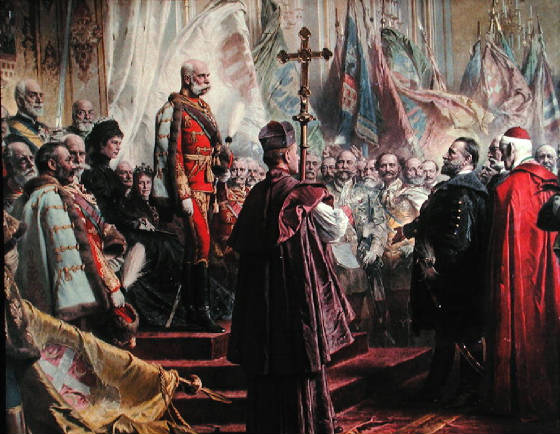 Titles of
the Emperor of Austria The Austrian Emperors had an extensive list of titles and claims that reflected the geographic expanse
and diversity of the lands ruled by the Austrian Habsburgs. The official title of the ruler of Austrian Empire and later Austrian-Hungarian
Monarchy had been changed several times: by a patent of August 1, 1804, by a court office decree from August 22, 1836, by
an imperial court ministry decree of January 6, 1867 and finally by a letter of December 12, 1867. Shorter versions were recommended
for official documents and international treaties: "Emperor of Austria, King of Bohemia etc. and Apostolic King of Hungary",
"Emperor of Austria and Apostolic King of Hungary", "His Majesty The Emperor and King" and "His Imperial
and Royal Apostolic Majesty". 
The full list
(after the loss of the Lombardy in 1859 and Venetia in 1866): Emperor of Austria, Apostolic King of Hungary, King of Bohemia,
of Dalmatia, of Croatia, of Slavonia, of Galicia, of Lodomeria, and of Illyria, King of Jerusalem, and so forth, Archduke
of Austria, Grand Duke of Tuscany and of Cracow, Duke of Lorraine, of Salzburg, of Styria, of Carinthia, of Carniola and of
the Bukovina, Grand Prince of Transylvania, Margrave in Moravia, Duke of Upper and Lower Silesia, of Modena, Parma, Piacenza
and Guastalla, of Auschwitz and Zator, of Teschen, Friuli, Ragusa and Zara, Princely Count of Habsburg and Tyrol, of Kyburg,
Gorizia and Gradisca, Prince of Trient and Brixen, Margrave of Upper and Lower Lusatia and in Istria, Count of Hohenems, Feldkirch,
Bregenz, Sonnenberg, and so forth, Lord of Trieste, of Cattaro and of the Wendish Mark, Grand Voivode of the Voivodship of
Serbia, and so forth, Sovereign of the Order of the Golden Fleece. 
Holy
Roman Emperors of the House of Habsburg-Lorraine | Image | Name | Life | Election | Coronation | Ceased to be Emperor | Arms |
|---|
 | Francis
I | 8
December 1708
18
August 1765 | 13 September 1745 |
| 18 August 1765 |  | 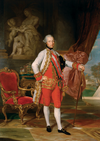 | Joseph
II | 13
March 1741 20 February
1790 | after
18 August 1765 | 19 August 1765 | 20 February 1790 |  |  | Leopold
II | 5
May 1747
1 March
1792 | after
20 February 1790 |
| 1 March 1792 |  |  | Francis
II | 12
February 1768
2 March
1835 | after
1 March 1792 | 4
March 1792 | 6
August 1806 |  |

Emperors
of Austria - 1804-1918 Name
| Lifespan
| Reign start
| Reign end
| Family
| Image
| | Francis I | 12 February 1768 - 2 March 1835(aged 67) | 11 August 1804 | 2 March 1835 | Habsburg-Lorraine |  | | Ferdinand I | 19 April 1793- 29 June 1875(aged 82) | 2 March 1835 | 2 December 1848
(abdicated) | Habsburg-Lorraine |  | | Francis Joseph
I | 18 August 1830 -
21 November 1916(aged 86) | 2 December 1848 | 21
November 1916 | Habsburg-Lorraine |  | | Charles I | 17 August 1887 - 1 April 1922(aged 34) | 21 November 1916 | 11 November 1918
(resigned) | Habsburg-Lorraine |  |
 Heads of
the Habsburg Family - since 1918 | Portrait | Name | Head of the family from | Head of the family until |
|---|
 | Charles
I | 11 November
1918 | †
1 April 1922 |  | Otto
von Habsburg | 1
April 1922 | 1
January 2007 (resigned) †
4 July 2011 |  | Karl
von Habsburg | 1
January 2007 | Incumbent |
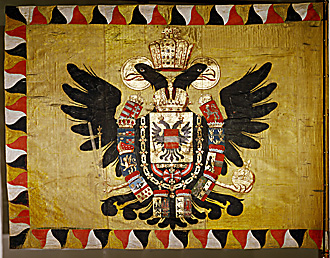
Titles
and Styles of The Imperial and Royal House The members of this family bear the titles "Archduke (Archduchess) of Austria, Prince
(Princess) of Hungary and Bohemia", and the style of "Imperial and Royal Highness". Descendants of morganatic
marriages, other than those granted specific titles (e.g., the Grafen von Meran and the Princes von Altenburg and Hohenberg)
generally bear the title "Graf (Gräfin) von Habsburg-Lothringen", or at least the surname "Habsburg". Genealogy of the Imperial and Royal House Part: I Maria Theresia, Archduchess of Austria, daughter of
Emperor Karl VI, was b.Vienna 13 May 1717; she succeeded her father as Queen of Hungary and Bohemia and heiress of Austria
on his death in 1740; she d.at Vienna 29 Nov 1780; she had married at Vienna 12 Feb 1736 Francis Stephen, Duke of Lorraine
(Lothringen) (Lunéville 8 Dec 1708-Innsbruck 18 Aug 1765), who in 1745 became the Emperor FRANZ I. Their issue:
1a) Marie Elisabeth Amalie Antonie Josephe Gabriele Johanna Agathe (Vienna 5 Feb 1737-Laxenburg
7 Jun 1740) 2a)
Marie Anna Josephe Antonie Johanna (Vienna 6 Oct 1738-Vienna 19 Nov 1789)
3a) Marie Caroline Ernestine Antonie Johanna
Josephe (Vienna 12 Jan 1740-Vienna 25 Jan 1741) 4a)
Emperor JOSEF II Benedikt August Johann Anton Michael Adam (Schönbrunn 13 Mar 1741-Vienna 20 Feb 1790); m.1st by proxy
at Parma 7 Sep 1760 and in person at Vienna 6 Oct 1760 Isabella Maria Pss of Bourbon-Parma (Madrid 31 Dec 1741-Vienna 27 Nov
1763); m.2d by proxy at Munich 13 Jan 1765 and in person at Schönbrunn 23 Jan 1765 Marie Josephe Pss of Bavaria (Munich
30 Mar 1739-Vienna 28 May 1767) 1b) Maria Theresia (Vienna 20 Mar 1762-Vienna 23 Jan 1770) 2b) Christina (b.and d.Vienna 22 Nov 1763) 5a) Marie Christine Johanna Josephe Antonie (Vienna 13 May 1742-Vienna 24 Jun
1798); m.Vienna 8 Apr 1766 Albert Pr of Saxony, Duke of Teschen (Moritzburg 11 Jul 1738-Vienna 10 Feb 1822)
6a)
Marie Elisabeth Josephe Johanna Antonie (Vienna 13 Aug 1743-Linz 22 Sep 1808) 7a)
Karl Joseph Emanuel Johann Nepomuck Anton Prokop (Vienna 1 Feb 1745-Vienna 18 Jan 1761) 8a)
Marie Amalie Josepha Johanna Antonie (Vienna 26 Feb 1746-Prague 18 Jun 1804); m.by proxy at Vienna 27 Jun 1769 and in person
at Colorno 19 Jul 1769 Ferdinando, Duke of Parma (Parma 20 Jan 1851-Fontevivo 9 Oct 1802) 9a)
Emperor Peter LEOPOLD II Joseph (Schönbrunn 5 May 1747-Vienna 1 Mar 1792), succeeded his brother, Emperor Joseph II,
on 20 Feb 1790; he m.by proxy at Madrid 16 Feb 1764 and in person at Innsbruck 5 Aug 1765 Maria Luisa Infanta of Spain (Naples
24 Nov 1745-Vienna 15 May 1792) 1b)
Maria Theresia Josephe Charlotte Johanna (Florence 14
Jan 1767-Leipzig 7 Nov 1827); m.by proxy at Florence 8 Sep 1787 and in person at Dresden 18 Oct 1787 King Anton of Saxony
(Dresden 27 Dec 1755-Pillnitz 6 Jun 1836) 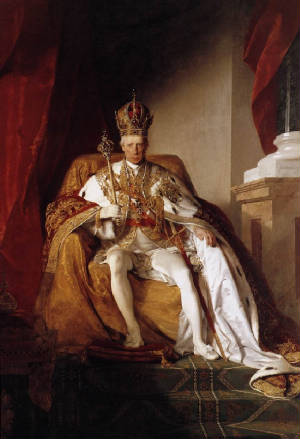 2b) Emperor
FRANZ II Joseph Karl, who in 1806 abdicated as Holy Roman Emperor and became Emperor FRANZ of Austria, (Florence 12 Feb 1768-Vienna
2 Mar 1835); m.1st Vienna 6 Jan 1788 Elisabeth Dss of Württemberg (Treptow 21 Apr 1767-Vienna 18 Feb 1790); m.2d by proxy
at Naples 15 Aug 1790 and in person at Vienna 19 Sep 1790 Maria Teresa Pss of Bourbon-Two Sicilies (Naples 6 Jun 1772-Vienna
13 Apr 1807); m.3d Vienna 6 Jan 1808 Maria Ludowika Archdss of Austia-Este (Monza 14 Dec 1787-Verona 7 Apr 1816); m.4th by
proxy at Munich 29 Oct 1816 and in person at Vienna 10 Nov 1816 Caroline Auguste Pss of Bavaria (Mannheim 8 Feb 1792-Vienna
9 Feb 1873) 1c) Ludovika Elisabeth Franziska (Vienna 18 Feb 1790-Vienna 24 Jun
1791) 2c) Marie
Louise Leopoldine Franziska Theresia Josepha Lucia, Dss of Parma, Piacenza and Guastalla 1814-1847 (Vienna 12 Dec 1791-Vienna
17 Dec 1847); m.1st by proxy at Vienna 11 Mar 1810 and in person (civ) at St.Cloud 1 Apr 1810 (rel) at the Louvre 2 Apr 1810
Napoléon I, Emperor of the French (Ajaccio 15 Aug 1769-St.Helena 5 May 1821); m.2d Parma 7 Sep 1821 Adam Adalbert Gf
von Neipperg (Vienna 8 Apr 1775-Parma 22 Feb 1829); m.3d Parma 17 Feb 1834 Cte Charles de Bombelles (Versailles 6 Nov 1785-
Versailles 30 May 1856) 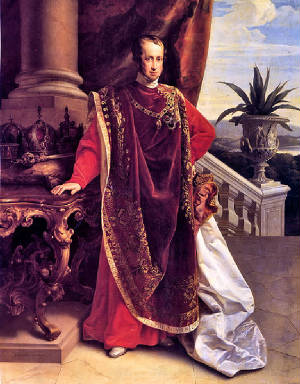 3c) FERDINAND I
Karl Leopold Joseph Franz Marcelin, Emperor of Austria from the death of his father until his abdication 2 Dec 1848 (Vienna
19 Apr 1793-Prague 29 Jun 1875); m.Vienna 27 Feb 1831 Maria Anna Pss of Savoy (Rome 19 Sep 1803-Prague 4 May 1884)
4c) Marie Caroline Leopoldine
Franziska Theresia Josepha Medarde (Vienna 8 Jun 1794-Vienna 16 Mar 1795)
5c) Caroline Ludovika Leopoldine (Vienna
9 Dec 1795-Schloß Hetzendorf 30 Jun 1799) 6c) Maria Leopoldina Josepha Caroline (Vienna 22 Jan 1797-Rio de Janeiro 11 Dec 1826); m.by proxy at Vienna 13 May
1817 and in person at Rio de Janeiro 5 Nov 1817 Pedro I, Emperor of Brazil [later, King Pedro IV of Portugal (Queluz 12 Oct
1798-Queluz 24 Sep 1834) 7c) Marie Clementine Franziska Josepha (Vienna 1 Mar 1798-Château de Chantilly 3 Sep 1881); m.Schönbrunn
28 Jul 1816 Leopoldo Pr of Bourbon-Two Sicilies, Pr di Salerno (Naples 2 Jul 1790-Naples 10 Mar 1851)
8c)
Joseph Franz Leopold (Vienna 9 Apr 1799-Laxenburg 30 Jun 1807) 9c) Marie Caroline Ferdinande Theresia Josephine Demetria (Vienna 8 Apr 1801-Dresden 22 May 1832); m.by proxy at
Vienna 26 Sep 1819 and in person at Dresden 7 Oct 1819 King Friedrich August II of Saxony (Dresden 18 May 1797-Brennbuchel
9 Aug 1854. 10c) Franz Karl Joseph (Vienna 7 Dec 1802-Vienna 8 Mar 1878); he renounced his succession rights 1848;
m.Vienna 4 Nov 1824 Sophie Pss of Bavaria (Munich 27 Jan 1805-Vienna 28 May 1872)  1d) FRANZ JOSEPH Karl,
Emperor of Austria 2 Dec 1848 (Schönbrunn 18 Aug 1830-Schönbrunn 21 Nov 1916); m.Vienna 24 Apr 1854 Elisabeth Dss
in Bavaria (Munich 24 Dec 1837-assassinated at Geneva 10 Sep 1898) . 1e) Sophie Friederike Dorothea Maria Josepha (Vienna 5 Mar 1855-Buda 29 May 1857) 2e) Gisela
Louise Marie (Laxenburg 12 Jul 1856-Munich 27 Jul 1932); m.Vienna 20 Apr 1875 Leopold Pr of Bavaria (Munich 9 Feb 1846-Munich
28 Sep 1930) 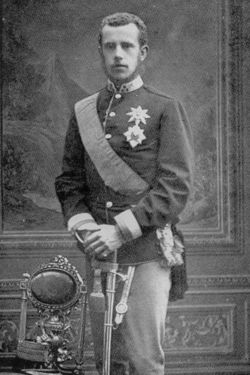
3e) Rudolf Franz Karl Joseph, Crown
Prince of Austria (Laxenburg 21 Aug 1858-committed suicide at Mayerling 30 Jan 1889); m.Vienna 10 May 1881 Stephanie Pss of
Belgium (Laeken 21 May 1864-Pannonhalma, Hungary 23 Aug 1945) 1f) Elisabeth Marie Henriette
Stephanie Gisela (Laxenburg 2 Sep 1883- Vienna-Hütteldorf 22 Mar 1963); m.1st Vienna 23 Jan 1902 (div 1924) Otto Pr zu
Windisch-Grätz (Graz 7 Oct 1873-Lugano 25 Dec 1952); m.2d Vienna 4 May 1948 Leopold Petznek (Bruck an der Leitha 30 Jun
1881-Vienna 27 Jul 1956) 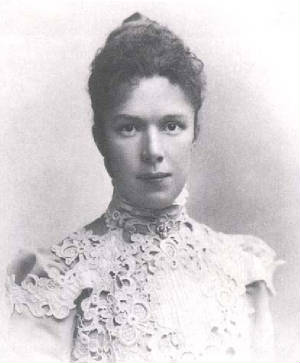 4e) Marie Valerie Mathilde Amalie (Buda 22 Apr 1868-Schloß
Wallsee 6 Sep 1924); m.Ischl 31 Jul 1890 Franz Salvator Archduke of Austria (Altmünster 21 Aug 1866-Vienna 20 Apr 1939) 2d) Ferdinand Maximilian, b.Vienna 6 Jul
1832, became Emperor Maximilian of Mexico 10 Apr 1864 but was ousted by revolutionaries and executed at Queretaro, Mexico
19 Jun 1867; m.Brussels 27 Jul 1857 Charlotte Pss of Belgium (Laeken 7 Jun 1840-Château de Bouchout, Belgium 19 Jan
1927) 3d) Karl Ludwig (Schönbrunn 30 Jul 1833-Vienna 19 May 1896); m.1st Dresden 4 Nov 1856
Margaretha Pss of Saxony (Dresden 24 May 1840-Monza 15 Sep 1858); m.2d by proxy at Rome 16 Oct 1862 and in person at Venice
21 Oct 1862 Maria Annunciata Pss of Bourbon-Two Sicilies (Caserta 24 Mar 1843-Vienna 4 May 1871); m.3d Kleinheubach 23 Jul
1873 Maria Teresa Infanta of Portugal (Kleinheubach 24 Aug 1855-Vienna 12 Feb 1944) . 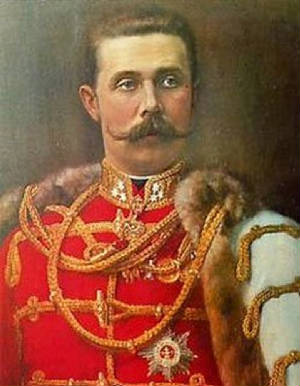 1e) Franz Ferdinand Karl Ludwig Joseph, who became heir presumptive to the Imperial Throne on the death of his cousin,
the Crown Prince Rudolf, in 1889 (Graz 18 Dec 1863-assassinated at Sarajevo 28 Jun 1914); m.(morganatically) at Reichstadt,
Bohemia 1 Jul 1900 Sophie Gfn Chotek von Chotkowa, who was in 1905 cr Herzogin von Hohenberg (Durchlaucht) (Stuttgart 1 Mar
1868-assassinated at Sarajevo 28 Jun 1914); their issue bear the titles Fürst[in] von Hohenberg (Durchlaucht), except
the head of the house, who is Herzog von Hohenberg 1f) Sophie Marie Franziska Antonia Ignatia Alberta (Konopischt 24
Jul 1901-Thannhausen 27 Oct 1990); m.Tetschen 8 Sep 1920 Friedrich Gf von Nostitz-Rieneck (Prague 1 Nov 1893-Graz 29 Dec 1973)
see: Dukes of Hohenberg - House of Hohenberg 2e) Otto Franz Joseph Karl Ludwig Maria (Graz 21 Apr 1865-Vienna 1 Nov 1906); m.Dresden 2 Oct 1886 Maria Josepha
Pss of Saxony (Dresden 31 May 1867-Schloß Wildenwart, Upper Bavaria 28 May 1944) 1f) KARL, Emperor of Austria on the death of his great-uncle, Emperor Franz Josef, in 1916, until he fled
the country in 1918/9; b.Persenbeug 17 Aug 1887, d.Funchal, Madeira 1 Apr 1922; m.Schwarzau am Steinfelde 21 Oct 1911 Zita
Pss of Bourbon-Parma (Villa Pianore 9 May 1892-Zizers 14 Mar 1989)  1g) Franz Joseph OTTO Robert
Maria Anton Karl Max Heinrich Sixtus Xaver Felix Renatus Ludwig Gaetan Pius Ignatius, relinquished status as head of house
to his son Karl 2007 (Villa Wartholz bei Reichenau, Lower Austria 20 Nov 1912-Pöcking 4 Jul 2011); m.Nancy 10 May 1951
Regina Pss of Saxe-Meiningen (Würzburg 6 Jan 1925-Pöcking 3 Feb 2010) 1h) Andrea Maria, b.Würzburg 30 May 1953; m.(civ) Pöcking, Upper Bavaria 9 Jul
1977 (rel) 30 Jul 1977 Karl Eugen Erbgf von Neipperg (b.Schwaigern 20 Oct 1951) 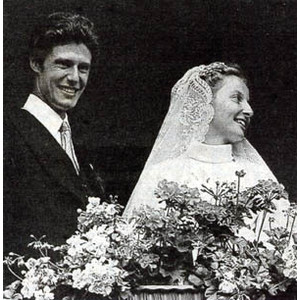 2h)
Monika Maria Roberta Antonia Raphaela, b.Würzburg 13 Sep 1954; m.Pöcking 21 Jun 1980 Don Luis Gonzaga de Casanova-Cárdenas
y Barón Duque de Santangelo Marqués de Elche Cde de Lodosa (b.Madrid 24 Apr 1950) 3h) Michaela Maria Madeleine Kiliana Elisabeth, b.Würzburg 13 Sep 1954; m.1st (civ) 12 Jul 1982 (rel)
Anton, Panama 14 Jan 1984 (div 1993) Eric Alba Teran d'Antin (Mexico City 21 May 1920-New York 9 Jul 2004 [acc to internet
reports, not confirmed); m.2d 22 Oct 1994 (div 1998) Hubertus Gf von Kageneck (b.Haus Blumenscheidt bei Wittlich 10 Aug 1940) 4h) Gabriela Maria Charlotte Felicitas Elisabeth Antonia, b.Luxemburg 14 Oct 1956; m.(civ)
Pöcking 30 Aug 1978 (rel) St.Odile 5 Sep 1978 (div 1997) Christian Meister (b.Starnberg 1 Sep 1954) 5h) Walburga Maria Franziska Helene Elisabeth, b.Berg am Starnberger See 5 Oct 1958; m.Budapest
5 Dec 1992 Carl Axel Archibald Gf Douglas (b.Stockholm 27 Nov 1949) 6h) KARL Thomas Robert Maria
Franziskus Georg Bahnam, b.Starnberg 11 Jan 1961; m.Mariazell 31 Jan 1993 (civ) Salzburg 6 Feb 1993 Bss Francesca von Thyssen-Bornemisza
(b.Lausanne 7 Jun 1958) 1i) Eleonore Jelena Maria del Pilar Iona, b.Salzburg
28 Feb 1994
2i) Ferdinand Zvonimir Maria Balthus Keith Michal Otto
Antal Bahnam Leonhard, b.Salzburg 21 Jun 1997
3i) Gloria Maria
Bogdana Paloma Regina Fiona Gabriela, b.Salzburg 15 Oct 1999
|

